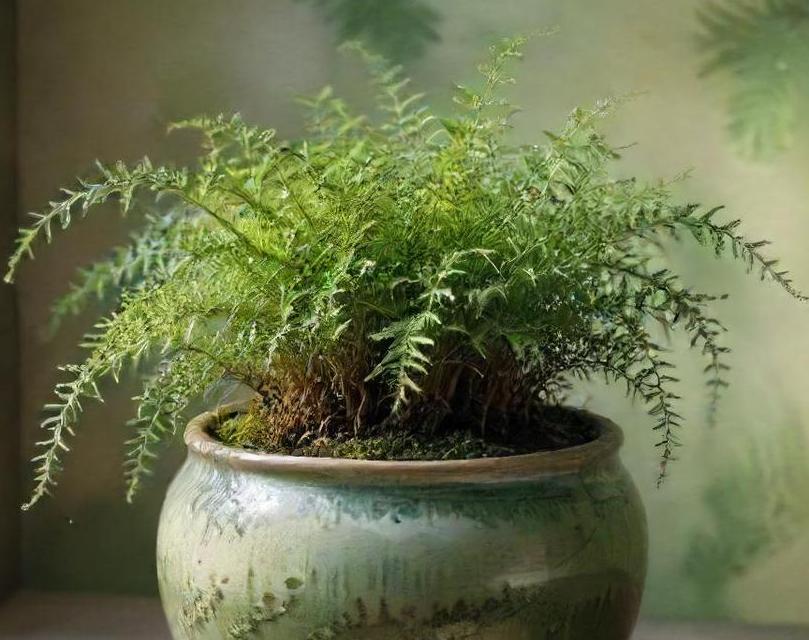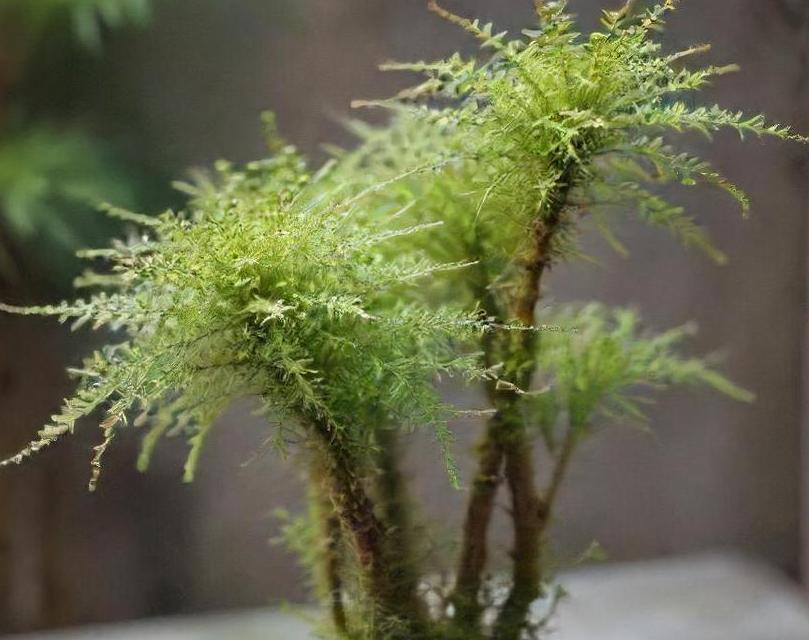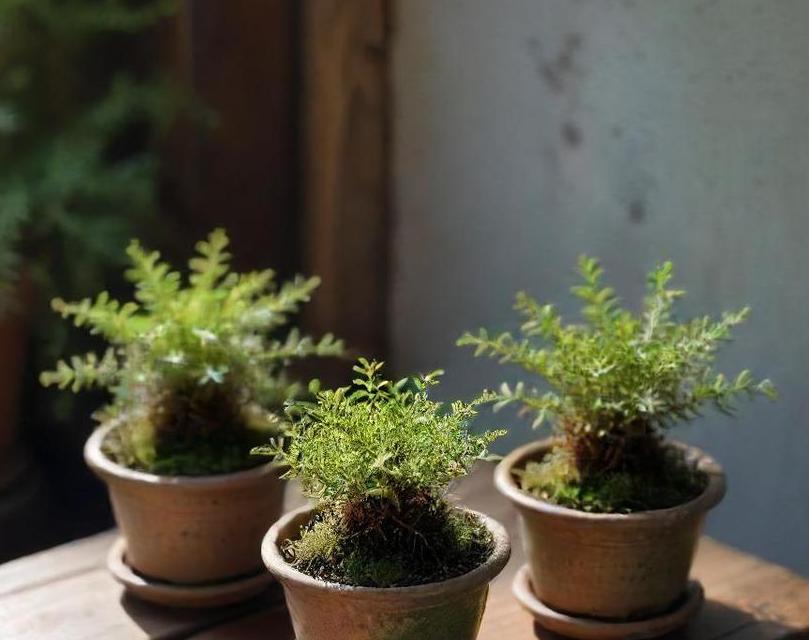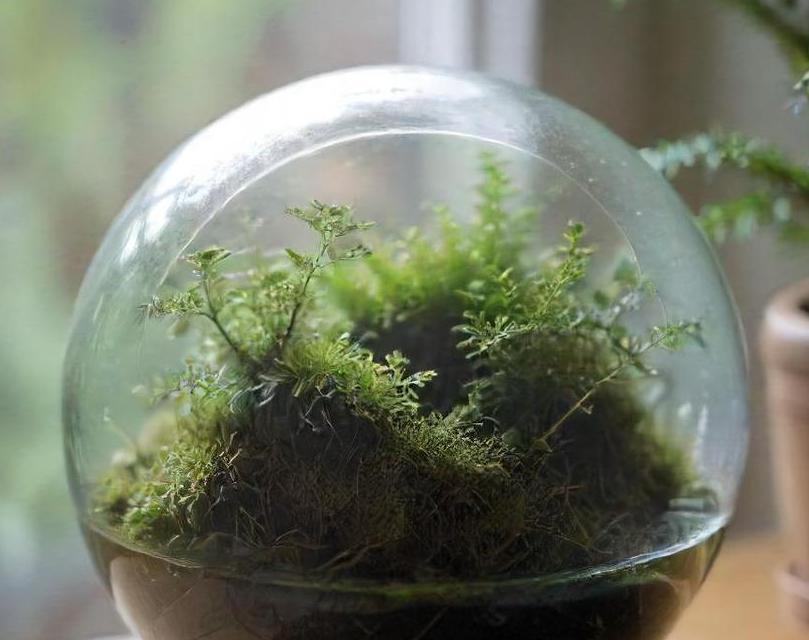- You are here:
- Home »
- Indoor Plants
- » Asian Spikemoss Care Guide

Asian Spikemoss Care Guide
Indoor plants not only enhance the aesthetics of our living spaces but also contribute to improving air quality and overall well-being. Among the myriad of choices, the Asian Spikemoss stands out as a versatile and captivating option. With its lush foliage and easy-care nature, it has become a popular choice for both novice and experienced plant enthusiasts. This article delves into the intricate details of the Asian Spikemoss, exploring its botanical characteristics, historical and cultural significance, common names, and varieties.
Contents
- 1 What Is Asian Spikemoss?
- 2 Botanical Characteristics
- 3 Historical And Cultural Significance
- 4 Common Names And Varieties
- 5 Light Requirements
- 6 Soil Requirements
- 7 Temperature Requirements
- 8 Humidity Requirements
- 9 Watering Needs For Asian Spikemoss
- 10 Fertilization
- 11 How To Plant Asian Spikemoss
- 12 Potting
- 13 Pruning Techniques For Asian Spikemoss
- 14 Propagation Methods For Asian Spikemoss
- 15 Troubleshooting Problems With Planting Asian Spikemoss Indoors
- 16 Conclusion
- 17 FAQS
What Is Asian Spikemoss?
Asian Spikemoss, scientifically known as Selaginella uncinata, belongs to the Selaginellaceae family and is native to the tropical and subtropical regions of Asia. This evergreen perennial plant is characterized by its trailing stems adorned with small, needle-like leaves, giving it a delicate and feathery appearance. While often mistaken for moss or ferns, spikemosses like the Asian Spikemoss are actually primitive vascular plants that reproduce via spores rather than seeds.
One of the defining features of the Asian Spikemoss is its ability to thrive in low light conditions, making it an ideal choice for indoor environments. It typically grows to a height of 6 to 12 inches, although some varieties may exhibit slightly different growth habits. Its compact size and cascading foliage make it suitable for hanging baskets, terrariums, or as a ground cover in shady areas of the garden.
Botanical Characteristics
The Asian Spikemoss boasts several distinct botanical characteristics that contribute to its unique charm and adaptability. Let’s delve into these features:
Foliage
The foliage of the Asian Spikemoss is its most striking feature. The small, scale-like leaves are arranged in alternating pairs along the stems, giving the plant a dense and bushy appearance. These leaves are typically a vibrant shade of green, although certain varieties may exhibit variations in color, ranging from golden hues to deep greens.
Stems
The stems of the Asian Spikemoss are slender, wiry, and often intricately branched. They trail gracefully, making the plant well-suited for hanging containers or cascading over the edges of shelves or terrariums. Despite its delicate appearance, the stems are surprisingly resilient and can withstand gentle handling.
Spores
Like other members of the Selaginella genus, the Asian Spikemoss reproduces via spores rather than seeds. Spores are produced in small, cone-like structures known as sporangia, which develop on the undersides of the leaves. When mature, these sporangia release spores into the surrounding environment, allowing the plant to propagate and colonize new areas.
Root System
The Asian Spikemoss has a shallow and fibrous root system, which makes it well-suited for container cultivation. It thrives in well-draining potting mixtures that retain moisture without becoming waterlogged. Regular watering is essential to keep the roots hydrated, especially during periods of active growth.
Historical And Cultural Significance

Throughout history, plants have held cultural and symbolic significance in various societies around the world. While the Asian Spikemoss may not boast the same storied past as some traditional herbs or flowers, it nevertheless holds value in both botanical and cultural contexts.
Botanical Significance
From a botanical standpoint, the Asian Spikemoss is valued for its resilience and adaptability. Its ability to thrive in low light conditions and tolerate fluctuating humidity levels makes it a popular choice for indoor cultivation. Botanists and horticulturists appreciate its unique reproductive mechanisms and study its ecological role in its native habitats.
Cultural Significance
While not deeply rooted in cultural traditions, the Asian Spikemoss has gained popularity among plant enthusiasts and interior decorators alike. Its delicate foliage and low maintenance requirements make it a favored choice for adding greenery to homes, offices, and public spaces. In regions where it is native, it may hold symbolic significance in traditional medicine or folklore, although specific beliefs or practices vary.
Common Names And Varieties
The Asian Spikemoss is known by various common names, reflecting its widespread cultivation and popularity among gardeners. Some of the most commonly used names include:
- Asian Spikemoss
- Blue Spikemoss
- Peacock Spikemoss
- Frosty Spikemoss
- Golden Spikemoss
Varieties
While the basic botanical characteristics remain consistent across different varieties of Selaginella uncinata, there are subtle differences in foliage color, growth habit, and overall appearance. Some notable varieties include:
- Selaginella uncinata ‘Blue’: This variety features striking blue-green foliage that adds a cool and refreshing accent to indoor spaces.
- Selaginella uncinata ‘Golden’: With its golden-yellow foliage, this variety adds a touch of warmth and vibrancy to any setting.
- Selaginella uncinata ‘Frosty’: The ‘Frosty’ variety is characterized by its silvery-blue foliage, which creates a frost-kissed effect reminiscent of winter landscapes.
The Asian Spikemoss (Selaginella uncinata) is a captivating indoor plant prized for its lush foliage, resilience, and adaptability. With its delicate appearance and low maintenance requirements, it has earned a place in the hearts of plant enthusiasts around the world. Whether cascading from a hanging basket or adding a touch of greenery to a terrarium, the Asian Spikemoss brings a sense of natural beauty and tranquility to any indoor space. Its historical and cultural significance, along with its diverse range of varieties, further contribute to its appeal as a beloved ornamental plant. Whether you’re a seasoned gardener or a novice plant parent, the Asian Spikemoss is sure to delight with its charm and elegance.
Light Requirements

The Asian Spikemoss, scientifically known as Selaginella uncinata, is a delicate and graceful fern ally that belongs to the Selaginellaceae family. Originating from Southeast Asia, particularly China, Japan, and Vietnam, this evergreen perennial is admired for its fine-textured, feathery foliage and its ability to thrive in low light conditions. Asian Spikemoss is often cultivated as a ground cover in outdoor gardens but has gained popularity as an indoor plant due to its adaptability and ease of care.
With its trailing habit and vibrant green foliage, Asian Spikemoss adds a touch of lushness and tranquility to indoor spaces. Its compact growth habit makes it an ideal choice for terrariums, hanging baskets, or as a trailing accent in indoor plant arrangements. Moreover, its resilience to neglect and ability to tolerate low light conditions make it a perfect choice for novice plant enthusiasts or those with busy lifestyles.
Asian Spikemoss is renowned for its adaptability to low light conditions, making it an excellent choice for indoor environments with limited natural light. While it can tolerate low light, it thrives in bright, indirect light. Positioning the plant near a north or east-facing window where it receives filtered sunlight is ideal. Direct sunlight should be avoided as it can scorch the delicate foliage.
In settings with artificial lighting, Asian Spikemoss can be grown under fluorescent lights or LED grow lights designed for indoor plants. Placing the plant within a few feet of the light source ensures it receives an adequate amount of artificial light to support its growth.
Regularly rotating the plant ensures even exposure to light, promoting balanced growth and preventing the foliage from becoming lopsided. Observing the plant for signs of stress, such as yellowing or browning of the leaves, can indicate inadequate or excessive light exposure and prompt adjustments in placement accordingly.
Soil Requirements
The soil composition plays a crucial role in the overall health and growth of Asian Spikemoss. A well-draining, moisture-retentive soil mix is essential for mimicking its natural habitat and preventing waterlogged conditions that can lead to root rot.
A recommended soil mix for Asian Spikemoss consists of equal parts peat moss, perlite, and coarse sand. This combination provides adequate aeration, drainage, and moisture retention, creating an optimal environment for root development. Additionally, incorporating organic matter such as compost or leaf mold enriches the soil with nutrients, promoting healthy growth and foliage.
When potting or repotting Asian Spikemoss, choose a container with drainage holes to prevent water from pooling at the bottom. Fill the container with the prepared soil mix, ensuring that the roots are evenly distributed and covered with soil. Gently firm the soil around the roots to provide stability and water the plant thoroughly until the excess moisture drains out from the bottom of the pot.
Maintaining consistent soil moisture is key to the well-being of Asian Spikemoss. While it prefers slightly moist conditions, overwatering should be avoided as it can lead to root rot. Allow the top inch of soil to dry out between waterings, adjusting the frequency based on environmental factors such as temperature and humidity levels.
Temperature Requirements

Asian Spikemoss thrives in moderate temperatures similar to those found in its native habitat. While it can tolerate fluctuations in temperature, maintaining a consistent and moderate temperature range ensures optimal growth and health.
The ideal temperature range for Asian Spikemoss is between 65°F to 75°F (18°C to 24°C) during the day and slightly cooler temperatures of 55°F to 60°F (13°C to 16°C) at night. Avoid exposing the plant to extreme temperature fluctuations or drafts, which can stress the foliage and inhibit growth.
During the winter months, when indoor heating can lead to drier air, placing a humidity tray filled with water or using a room humidifier helps maintain adequate moisture levels around the plant. Additionally, grouping plants together creates a microclimate of increased humidity, benefiting Asian Spikemoss and other moisture-loving plants.
Humidity Requirements
As a tropical plant, Asian Spikemoss thrives in environments with high humidity levels. Mimicking its native habitat by providing adequate humidity promotes lush growth and prevents the foliage from drying out.
Indoor environments often have lower humidity levels, especially during the winter months when heating systems are in use. To increase humidity around Asian Spikemoss, several strategies can be employed:
-
Misting: Regularly misting the foliage with room temperature water helps increase humidity levels and keeps the leaves hydrated. Misting is particularly beneficial during dry periods or when the plant is exposed to indoor heating.
-
Humidity Trays: Placing the plant pot on a tray filled with pebbles and water creates a reservoir of moisture that evaporates, increasing humidity levels around the plant. Ensure that the bottom of the pot does not come into direct contact with the water to prevent waterlogging.
-
Room Humidifiers: Using a room humidifier is an effective way to maintain consistent humidity levels in indoor spaces, benefiting not only Asian Spikemoss but also other humidity-sensitive plants.
-
Grouping Plants: Grouping Asian Spikemoss with other plants creates a microclimate of increased humidity through transpiration, where plants release moisture into the surrounding air. This strategy is especially useful in areas with limited access to natural light, such as bathrooms or kitchens.
Asian Spikemoss, with its elegant trailing foliage and low-maintenance nature, is an excellent choice for indoor plant enthusiasts seeking to add greenery to their living spaces. Understanding its light, soil, temperature, and humidity requirements is essential for providing the optimal growing conditions and ensuring its health and vitality. By providing bright, indirect light, a well-draining soil mix, moderate temperatures, and adequate humidity, Asian Spikemoss thrives as an indoor plant, adding beauty and tranquility to any room. With proper care and attention to its needs, this charming fern ally rewards plant lovers with its lush green foliage and graceful presence year-round.
Watering Needs For Asian Spikemoss

Asian Spikemoss, scientifically known as Selaginella uncinata, is a visually striking and resilient species of fern-like plant often cultivated as an indoor ornamental. Originating from the tropical and subtropical regions of Asia, particularly China, Japan, and Korea, this evergreen plant belongs to the Selaginellaceae family. Its delicate appearance, coupled with its ability to thrive in low light conditions, makes it a popular choice for indoor gardening enthusiasts seeking to add a touch of greenery to their living spaces.
Asian Spikemoss is characterized by its dense, sprawling growth habit, with its slender stems bearing small, scale-like leaves arranged in a spiral fashion. These leaves range in color from vibrant green to shades of bronze, giving the plant a rich and textured appearance. Due to its trailing nature, Asian Spikemoss is often used in hanging baskets, terrariums, or as ground cover in shaded areas of gardens.
Understanding the specific care requirements of Asian Spikemoss is essential for ensuring its health and longevity as an indoor plant. From watering and fertilization to potting techniques, each aspect of its care contributes to its overall well-being and aesthetic appeal.
Proper watering is crucial for maintaining the health and vigor of Asian Spikemoss. While this plant thrives in moist environments, it is susceptible to root rot if overwatered. Finding the right balance is key to promoting optimal growth and preventing water-related issues.
Monitoring Soil Moisture
Before watering Asian Spikemoss, it’s essential to assess the moisture levels of the soil. Unlike many other houseplants, Asian Spikemoss prefers consistently moist soil but not waterlogged conditions. Inserting your finger into the soil up to the first knuckle is a simple yet effective method for gauging moisture levels. If the soil feels dry at this depth, it’s time to water the plant.
Watering Technique
When watering Asian Spikemoss, it’s important to do so gently and evenly, ensuring that the soil is thoroughly moistened without becoming waterlogged. Using a watering can with a narrow spout or a spray bottle can help distribute water evenly across the surface of the soil, avoiding excessive saturation.
Frequency Of Watering
The frequency of watering will largely depend on environmental factors such as temperature, humidity, and light levels. Generally, Asian Spikemoss may require watering every 1-2 days during the growing season, while less frequent watering may be sufficient during the winter months when growth slows down.
Avoiding Water Stagnation
To prevent water from accumulating at the bottom of the pot, it’s advisable to ensure proper drainage by using pots with drainage holes and a well-draining potting mix. Removing excess water from saucers or trays after watering can also help prevent water stagnation, which can lead to root rot and other moisture-related issues.
Fertilization
Fertilization plays a crucial role in supplying Asian Spikemoss with the essential nutrients needed for healthy growth and development. While this plant is relatively low-maintenance compared to other houseplants, periodic fertilization can help maintain its vibrancy and vigor.
Choosing The Right Fertilizer
When selecting a fertilizer for Asian Spikemoss, it’s important to opt for a balanced, water-soluble formula specifically formulated for indoor ferns or foliage plants. These fertilizers typically contain a balanced ratio of essential nutrients, including nitrogen (N), phosphorus (P), and potassium (K), as well as micronutrients such as iron and magnesium.
Fertilization Schedule
During the active growing season, which typically spans from spring to early fall, Asian Spikemoss will benefit from regular fertilization every 4-6 weeks. Diluting the fertilizer to half or quarter strength is advisable to avoid over-fertilization, which can cause nutrient imbalances and damage to the plant.
Application Method
When applying fertilizer to Asian Spikemoss, it’s best to dilute the solution according to the manufacturer’s instructions and apply it directly to the soil, avoiding contact with the foliage. Watering the plant immediately after fertilizing can help distribute the nutrients evenly throughout the root zone, promoting efficient absorption.
Winter Fertilization
During the winter months when growth slows down, it’s advisable to reduce or suspend fertilization to prevent nutrient build-up in the soil, which can lead to salt accumulation and root damage. Resume fertilization in spring as the plant enters its active growth phase.
How To Plant Asian Spikemoss

Planting Asian Spikemoss is a straightforward process that requires minimal effort and resources. Whether you’re starting with cuttings or transplanting established plants, following proper planting techniques is essential for ensuring successful establishment and growth.
Propagation
Asian Spikemoss can be propagated through division or stem cuttings. To propagate through division, carefully separate the plant into smaller sections, ensuring that each division has both roots and foliage. Plant the divisions in individual pots filled with well-draining potting mix, keeping the soil consistently moist until new growth emerges.
Alternatively, stem cuttings can be taken from healthy, mature plants and planted directly into the soil or a rooting medium. Ensure that the cuttings have at least one node, as this is where new roots will form. Keep the soil moist and provide indirect light until the cuttings take root.
Potting
When potting Asian Spikemoss, choosing the right container and potting mix is essential for promoting healthy growth and development. Select a pot with drainage holes to prevent waterlogged conditions, and use a lightweight, well-draining potting mix designed for ferns or tropical plants.
Planting Depth
Asian Spikemoss should be planted at the same depth as it was previously growing, ensuring that the roots are covered with soil but the crown remains above the surface. Gently firm the soil around the plant to provide stability and support.
Light Requirements
Asian Spikemoss thrives in low to moderate light conditions, making it an ideal choice for indoor spaces with limited natural light. Place the plant in a location where it receives bright, indirect light, such as near a north or east-facing window. Avoid exposing the plant to direct sunlight, as this can cause the foliage to burn or fade.
Temperature And Humidity
Maintaining moderate temperatures and humidity levels is crucial for the health and well-being of Asian Spikemoss. Ideally, the plant should be kept in a room with temperatures ranging from 60-75°F (15-24°C) and humidity levels of 50-60%. Placing a small humidifier nearby or grouping plants together can help create a more favorable microclimate.
Asian Spikemoss is a versatile and visually appealing indoor plant that adds a touch of elegance and greenery to any space. With its lush foliage, trailing habit, and low-maintenance requirements, it's an ideal choice for both novice and experienced gardeners alike. By understanding and implementing proper care techniques, including watering, fertilization, and planting, you can ensure that your Asian Spikemoss thrives and flourishes for years to come. Whether displayed in hanging baskets, terrariums, or as ground cover, this resilient plant is sure to enhance the beauty and ambiance of your indoor environment.
Pruning Techniques For Asian Spikemoss
Asian spikemoss (Selaginella kraussiana), also known as Krauss’s spikemoss, is a charming and resilient plant that has gained popularity among indoor plant enthusiasts. Belonging to the Selaginellaceae family, this evergreen perennial is native to Africa and has found its way into homes worldwide due to its low maintenance requirements and unique aesthetic appeal.
Asian spikemoss is characterized by its delicate, fern-like foliage, which forms dense mats that trail gracefully over containers or hang from baskets. Its small size and slow growth make it an ideal choice for terrariums, dish gardens, or as a ground cover in shady areas of the home. With proper care and attention, Asian spikemoss can thrive indoors, adding a touch of greenery and elegance to any space.
Pruning plays a crucial role in maintaining the health and appearance of Asian spikemoss plants. Regular pruning helps to remove dead or damaged foliage, promote new growth, and control the plant’s size and shape. Here are some pruning techniques to keep your Asian spikemoss looking its best:
1. Deadheading
Deadheading involves removing spent or faded foliage from the plant to encourage new growth and prevent the spread of disease. Use a pair of sharp, sterilized scissors or pruning shears to snip off dead or yellowing leaves at their base. Be sure to dispose of the removed foliage properly to avoid the accumulation of debris around the plant.
2. Trimming
Trimming is essential for maintaining the desired shape and size of Asian spikemoss plants. Use scissors or pruning shears to trim back overgrown or leggy stems, cutting them back to a desired length. Focus on removing any straggly or uneven growth to promote a more compact and uniform appearance.
3. Thinning
Thinning involves selectively removing excess foliage to improve air circulation and reduce overcrowding within the plant. Gently pull apart dense clumps of spikemoss and carefully remove any excess stems or foliage to create space and allow light to penetrate to the plant’s center. Thinning also helps to prevent the development of mold or mildew in humid conditions.
4. Shaping
Shaping is the process of sculpting the overall form of the plant to achieve a desired look or style. Use pruning shears to trim the edges of the plant, creating a neat and tidy appearance. You can also train the growth of Asian spikemoss by gently pinching or bending stems to encourage branching and promote a more compact growth habit.
Propagation Methods For Asian Spikemoss
Propagating Asian spikemoss is relatively straightforward and can be done through several methods, including division, stem cuttings, and spore propagation. Here’s how to propagate Asian spikemoss successfully:
1. Division
Division is one of the easiest ways to propagate Asian spikemoss and involves separating the plant into smaller sections, each with its own roots and foliage. To divide Asian spikemoss, carefully remove the plant from its container and gently tease apart the roots to separate individual clumps. Ensure that each division has enough roots and foliage to support its growth, then replant them in suitable containers with well-draining soil.
2. Stem Cuttings
Stem cuttings are another effective method of propagating Asian spikemoss and can be taken from healthy, mature stems. Using sharp, sterilized scissors or pruning shears, cut a section of stem measuring around 2-3 inches in length, ensuring that it has several nodes where roots can develop. Remove any lower leaves from the cutting and plant it in a small pot filled with moist potting mix. Keep the cutting in a warm, humid environment and mist it regularly to encourage root development.
3. Spore Propagation
Spore propagation involves collecting and sowing spores produced by mature Asian spikemoss plants to grow new individuals. To collect spores, place a mature frond in a paper bag and gently shake it to release the spores. Sprinkle the spores evenly onto the surface of a moist, sterile growing medium, then cover the tray with a clear plastic lid to create a humid environment. Place the tray in a warm, well-lit location and mist it regularly to keep the soil moist. After several weeks, tiny spikemoss plants will begin to emerge from the spores, which can then be transplanted into individual containers once they have developed roots.
Troubleshooting Problems With Planting Asian Spikemoss Indoors
While Asian spikemoss is generally easy to care for, it can still encounter some common problems when grown indoors. Here are some troubleshooting tips to help you address issues that may arise:
1. Overwatering
Overwatering is one of the most common problems encountered when growing Asian spikemoss indoors. Excessive moisture can lead to root rot and other fungal diseases, causing the plant’s foliage to turn yellow or brown and wilt. To prevent overwatering, allow the top inch of soil to dry out between waterings and ensure that the container has proper drainage to allow excess water to escape.
2. Insufficient Light
Asian spikemoss thrives in bright, indirect light but can tolerate lower light conditions as well. However, if the plant is not receiving enough light, it may become leggy and pale in color. To remedy this, move the plant to a brighter location with indirect sunlight or supplement natural light with artificial grow lights.
3. Poor Air Circulation
Poor air circulation can lead to the development of mold, mildew, or fungal diseases on Asian spikemoss plants, especially in humid environments. To improve air circulation, place a small fan near the plant to gently stir the air or periodically open windows to allow fresh air to circulate.
4. Pests
Asian spikemoss is relatively resistant to pests, but it can occasionally attract spider mites, aphids, or mealybugs. Inspect the plant regularly for signs of pest infestation, such as webbing, yellowing foliage, or sticky residue. If pests are present, treat the plant with insecticidal soap or neem oil, being sure to follow the manufacturer’s instructions carefully.
5. Temperature Fluctuations
Asian spikemoss prefers stable temperatures between 60-75°F (15-24°C) and can suffer damage if exposed to extreme heat or cold. Avoid placing the plant near drafty windows or heating vents, and protect it from sudden temperature fluctuations that can stress the plant and affect its growth.
Conclusion
Asian spikemoss is a versatile and attractive indoor plant that adds beauty and greenery to any space. With its delicate foliage, low maintenance requirements, and ease of propagation, it’s no wonder that this charming plant has become a favorite among plant enthusiasts. By following the pruning techniques, propagation methods, and troubleshooting tips outlined in this guide, you can ensure that your Asian spikemoss thrives and flourishes in its indoor environment for years to come.
FAQS
What Is Asian Spikemoss?
Asian Spikemoss, scientifically known as Selaginella uncinata, is a species of evergreen fern that belongs to the Selaginellaceae family. It is native to Asia, particularly found in countries like China, Japan, and Korea. Asian Spikemoss is often cultivated as an ornamental plant for indoor gardens due to its attractive foliage and low maintenance requirements.
How Does Asian Spikemoss Differ From Other Types Of Moss?
Unlike traditional mosses, Asian Spikemoss is not a true moss but rather a type of fern. It reproduces through spores and features small, scale-like leaves arranged in a spiral pattern along its stems. This distinctive foliage sets it apart from other moss species and contributes to its unique aesthetic appeal.
What Are The Ideal Growing Conditions For Asian Spikemoss?
Asian Spikemoss thrives in moist, humid environments with indirect sunlight. It prefers well-draining soil that is rich in organic matter. It can tolerate slightly acidic to neutral soil pH levels. Indoors, it is best placed in bright, indirect light, avoiding direct sunlight which can scorch its delicate foliage. Maintaining consistent humidity levels is crucial for its health and growth.
How Often Should Asian Spikemoss Be Watered?
Asian Spikemoss requires regular watering to keep its soil consistently moist but not waterlogged. Watering frequency may vary depending on factors such as temperature, humidity, and soil moisture retention. As a general rule, it is advisable to water the plant when the top inch of soil feels dry to the touch. Avoid overwatering, as it can lead to root rot and other issues.
Does Asian Spikemoss Require Fertilization?
Asian Spikemoss is not heavy feeder and typically does not require frequent fertilization. However, during the growing season in spring and summer, you can apply a diluted, balanced liquid fertilizer once every 4-6 weeks to promote healthy growth. It is essential to follow the manufacturer’s instructions and avoid over-fertilizing, which can harm the plant.
How Should Asian Spikemoss Be Propagated?
Asian Spikemoss can be propagated through division or by collecting and sowing spores. To divide the plant, carefully separate the rhizomes and roots, ensuring each division has healthy foliage and roots attached. Spores can be collected from mature sporophylls and sown on moist soil. Maintain high humidity levels and consistent moisture to encourage spore germination and seedling growth.
Are There Any Common Pests Or Diseases That Affect Asian Spikemoss?
While Asian Spikemoss is relatively resistant to pests and diseases, it may occasionally encounter issues such as spider mites, mealybugs, and fungal infections. Inspect the plant regularly for signs of pest infestation or disease, such as discolored or distorted foliage, and treat promptly with appropriate organic or chemical remedies. Proper cultural practices, such as providing adequate airflow and avoiding overwatering, can help prevent pest and disease problems.
